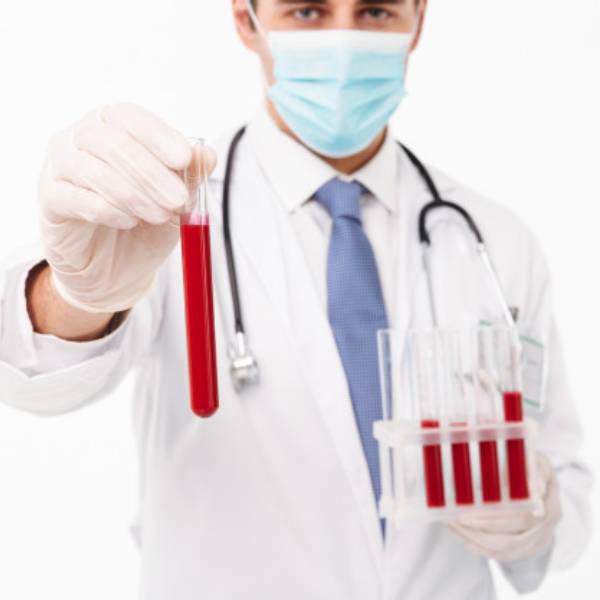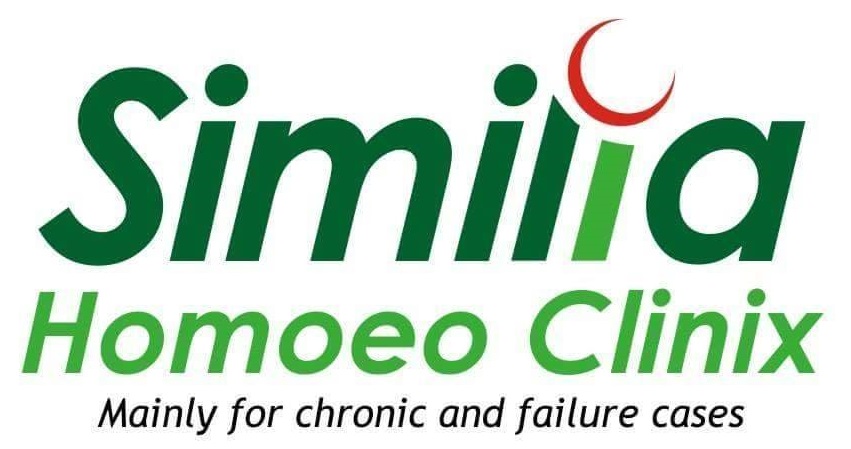
Homoeopathy is a complete system of medicine which aims at promoting general health by reinforcing body’s own natural health capacity.
Homoeopathy has an entirely different approach from the conventional allopathic system of treatment. Homoeopathic system of medicine is based on the law of similar, that is, likes are cured by likes. The remedy used to treat sick people are actually capable of producing similar symptoms in a healthy person to those present in the patient needing the remedy.
Likes cure likes. Any substance, which can produce a totality of symptoms in a healthy human being, can cure that totality of symptoms in a sick human body – Samuel Hahnemann.
Homoeopathy forms a holistic approach to health; it aids the body’s abilities to heal itself by improving the immune system of the body.
No two individuals manifest their illness in exactly the same way, so how can the remedy used for two individuals be the same. Certainly there are broad similarities & a degree of categorization is possible but with detailed analysis there are always differences. This is the key to homoeopathic cure.
The differences between the ways two individuals react to a similar disease are an indication of the unique way in which each of them reacts. This uniqueness of the symptoms & reactions brings in the difference in the remedy prescribed to each one of them.
This is the concept of homoeopathy & homoeopathic cure.
The homoeopathic system of medicine has developed at the end of eighteenth century by a German medical doctor, Samuel Hahnemann.
During the time of Hahnemann, many brutal ways were used to treat the patients such as leeching, cupping, bloodletting and many others. These ways of treatment were so cruel that they could kill the patient as well.
Hahnemann was disgusted and disappointed with these methods of treatment that he gave up his medical profession and started devoting his time to writing and translation works. However he continued to deeply interested in medical theory & in 1790, he hit upon the homoeopathic principle that like could be cured by like. When translating, ‘A treatise on the Materia Medica’ by the Edinburg physician, William Cullen, he read that the dry Cinchona was effective in the treatment of malaria because it was bitter & astringent & had a toning effect on the stomach. Hahnemann was not satisfied by this statement for, if it were true, then all bitter, astringent substances should likewise be effective in the treatment of malaria, & they were not.
Therefore Hahnemann decided to test the bark on himself, meeting his expectations, the symptoms on the fever occurred like could cure like. This was a part of Hippocrates teaching & sprang from the notion that symptoms could be an indication that the body was struggling to overthrow a disease, so it could be helped if the symptoms were encouraged. Thus was formulated the principle of ‘Similia similibus curentur’ Hahnemann named this new found therapy ‘Homoeo’ (similar) ‘pathy’ (suffering).
Subsequently, Hahnemann tested many other drugs to study the symptoms that they produced. He bravely experimented by testing the effects on himself and found many willing volunteers for the same. These experiments were known as proving and the first set of proving was conducted over about six years. As the mass of information required by these proving was assimilated, clear patterns could seen and eventually it was possible to test the substances as curative on patients with remarkable success. Although his patients were experiencing profound cures which solidly verified his theories, Hahnemann was marked as an outcast because of his method of single and minimum dosage was threatening the financial foundation of the powerful apothecaries.
But Hahnemann continued with his experiments despite the opposition and criticism from the old school of medicine. He started experimenting with a new method whereby after each dilution he would the substance rigorously. This he called ‘succession’ thus developing an energetic aspect of homoeopathy. It is unknown how Hahnemann reasoned this (still scientifically unexplainable) method of ‘potentiating’.
In 1820, at the investigation of apothecaries, the government granted an injunction against Hahnemann dispensing his own medicines.
In 1821, Hahnemann took refuge in Cothen where he acted as a court physician to the duke of Anhalt Cothen, a former patient. From this on his many pupils and followers were also subjected to persecution as the medical orthodoxy closed ranks.
In 1835, he went to live in Paris where he had an illustrious practice with rich and poor alike receiving treatment daily in his rooms in the rue de Milan.
In 1810, Hahnemann published the 1st. of the 6 editions of ‘The organism of medicine’ which clearly defined his homoeopathic philosophy. In that year, after the battle of Leipzig an epidemic of ilypus had spread amongst the defeated cops of Napoleon. Hahnemann successfully treated 180 men out of which only one died. This successful treatment further spread the reputation of Homoeopathy 7 Hahnemann.
By 1821, Hahnemann had proved 60 remedies and published his materia medica in six volumes. In 1831 cholera epidemic swept the central Europe and Hahnemann successfully treated cholera patients. He also published papers on the homoeopathic treatment of the disease and instigated the first wide spread usage of Homoeopathy.
Samuel Christian Friedrich Hahnemann was born in Meissen, Saxony on 10th. April 1755, the son of porcelain painter. His early education was at home where his father taught him never to learn passively but to question everything.
By the age of 12, he was already teaching Greek to other pupils, and at 20 he had mastered eight languages and began to study medicine first at Leipzig and then at Vienna and Erlangen where he qualified in 1779.
In 1782, at the age of 27, Hahnemann married Johanna Henrietta, the daughter of an apothecary. Hahnemann became medical doctor in 1791 and quickly established a reputation as a kind and conscientious physician, who despite his own lack of wealth, often refused to accept fees for his work. Once in practice, Hahnemann became disillusioned with the medical practices of the day. Eventually he ceases to practice and pursued studies in chemistry and earned a living from his linguistic skills.
In 1790, he discovered the principle of ‘likes cure likes’ and then devoted himself intensively to testing out homoeopathic remedies and after 6 six years, published an article on this principle in a leading medical journal. He later published ‘treatise on organon of rational medicine and materia medica’.
He accused the hostility of apothecaries and physicians and at their instigation, in 1820, Government granted an injunction against Hahnemann dispensing his own medicines.
He took refuge in Cothen and acted as the court physician to the Duke of Anhalt Cothen in 1821, where he found many pupils and followers. He published his work on chronic diseases in 1828.
His wife died in 1830 and he married for the second time to French woman, Marie Melanie d Hervily and went to live in Paris. There he had an illustrious practice with rich and poor alike receiving treatment daily in his rooms in the Rue de Milan. He died in 1843 at the age of 88.
It is generally felt that homoeopathic drugs cause initial aggravation, which is not a correct picture. The fact is that homoeopathic drugs stimulate the immune reaction by way of creating an artificial similar symptomatology in subtle manner which if it all felt by the patient is of transitory nature, and hardly affect the quality of life. Patients with chronic diseases who had been taking palliative immunosuppressive drugs (steroids), invariably report long drawn aggravation. Such aggravation is due to the withdrawal effect of the drugs. The safe course in all patients is to withdraw these drugs gradually and after getting some additional relief with homoeopathic drugs, aggravation can be minimized. Sometimes in chronic cases where there is lot of suppression of different symptoms for the last many years and the problems are of complex nature, old symptoms of the patient tend to appear during the phase of recovery; all such symptoms should be within tolerable limits and should give a simultaneous feeling of well being. So there is no need to have apprehension about the aggravations while taking homoeopathic treatment for any disease.
Homoeopathy takes in to account symptoms of the disease; characteristics of the patients, his desires and aversions, his state of mind and prepares a portrait of sickness, which is used for selecting a suitable homoeopathic drug. This drug usually covers most of the symptoms and removes the disease by stimulating the immune system of the body permanently. Homoeopathic doctors also monitor all other laboratory parameters like testing of blood sugar, eye examination, and heart examination in a diabetic patient. All these parameters help the physicians in the management of the case and helps in deciding about the extent of recovery during the follow up of patients. Hence homoeopathy gives comprehensive health care to patients.
It is a myth that homoeopathic drugs are slow to act. Patients respond to homoeopathic medicines instantaneously and the symptoms start improving quickly, even with single dose. Since homoeopathy usually deals with the chronic and lingering problems and such problems do take longer time to recover, this at times creates an impression that the drugs are slow in action. But the fact remains that the problems, which were almost difficult to treat by the other systems of medicine do recover permanently with homoeopathy. It will be pertinent to add that the acute symptoms like migraine headache, diarrhea, fever and colic recover with well – selected homoeopathic drugs instantaneously. So it can be said that the response with the homoeopathic drugs usually depends upon the duration and intensity of the problem and is not at all slow.
It is a fallacy that a lot of dietary restrictions are required while taking homoeopathic medicines. Dietary advices even in homoeopathy are primarily decided by the disease of the patient like salt restrictions in hypertension, sugar restriction in diabetes mellitus patients etc. It has been seen that homoeopathic medicines do act on person who are in that dietary restriction are prerequisite for taking homoeopathic are treatment. However, it will be wise to keep the mouth clean and fresh before taking the medicine. There are very few homoeopathic drugs where some dietary restrictions would be advisable to ensure better and lasting effect of the drugs.
Notice: Information on this web site is provided for informational purposes only and is not a substitute for professional medical advice. You should not use the information on this web site for diagnosing or treating a medical or health condition. If you have or suspect you have a medical problem, promptly contact your professional healthcare provider. Statements and information regarding dietary supplements have not been evaluated or approved by the Food and Drug Administration. Please consult your healthcare provider before beginning any course of supplementation or treatment.
Any system of therapeutic (treatment method) can be judged on the basis of its basic criteria, such as
For all age group (neonates to oldest person). Homeopathy is the best here.
In emergencies, Homeopathy can deal certain emergencies very well.
Can it be used in all diseases? Can your system of therapeutic is equally effective in toothache or earache or epileptic fits in? (Yoga, nutrients etc. cannot be used in such conditions). Homeopathy is the ideal.
Is it effective in accidental cases also? Homeopathy can be used up to some extent.
Is it effective in infectious diseases such as malaria; typhoid; meningitis, TB etc? Yoga, herbal preparations etc. are useless in such conditions. While Homeopathy is the best here also.
If it has some side-effects then it could not be used in children or in pregnant ladies. Allopathy has very well known for its side effects and Yoga has very limited scope in all ages and in pregnant females while Homeopathy has no such limitations.
If it is costly then it cannot be used at large. For an example – A person can be kept on ventilator for a long time but it is not an easy treatment for majority.
Is it simple to use or is it complicated or troublesome?
For example, medicinal treatment is always far better than any surgical treatment.
Homeopathy is the most simple in its use.
Whether it has to be adopted for life long or it will make you free from the disease one day. (Such as you can never give up supplementary food, similarly allopathic treatment for diabetes or hypertension would never make you free from the disease as well as its medicines); in the similar way Yoga is not a treatment but it is a life style that you have to be adopted for life long.
While Homeopathy has no such limitations.
Ultimately we find homeopathy is the only therapeutic system which fulfills all the above criteria. Actually it works through the genes. That’s why it is useful in all the named or unnamed diseases; in all ages even it can correct the fetus in the bomb. In real sense classical homeopathy does the genetic engineering (but no one can believe) that’s why it is equally effective in genetic diseases also.
Moreover, homeopathy is the only available treatment system that can predict the fate of a diseased person. Homeopathy prescribes the single medicine for all ailments. Simultaneously it treats the basic cause also. It can treat all natural diseases.
Everything in a person is inherited (transfer via genes); defective immunity is also inherited, and homeopathy works mainly on our immune system and corrects it.

While Homeopathy itself is a perfect science, its truth is only partially known. The truth itself relates to the Divine, the knowledge relates to man.
James Tyler Kent (1849-1916)
U.S. homeopathic teacher, physician
“Homeopathy …. Cures a larger percentage of cases than any other method of treatment and is beyond doubt safer and more economical and most complete medical science.”
Mahatama Gandhi
